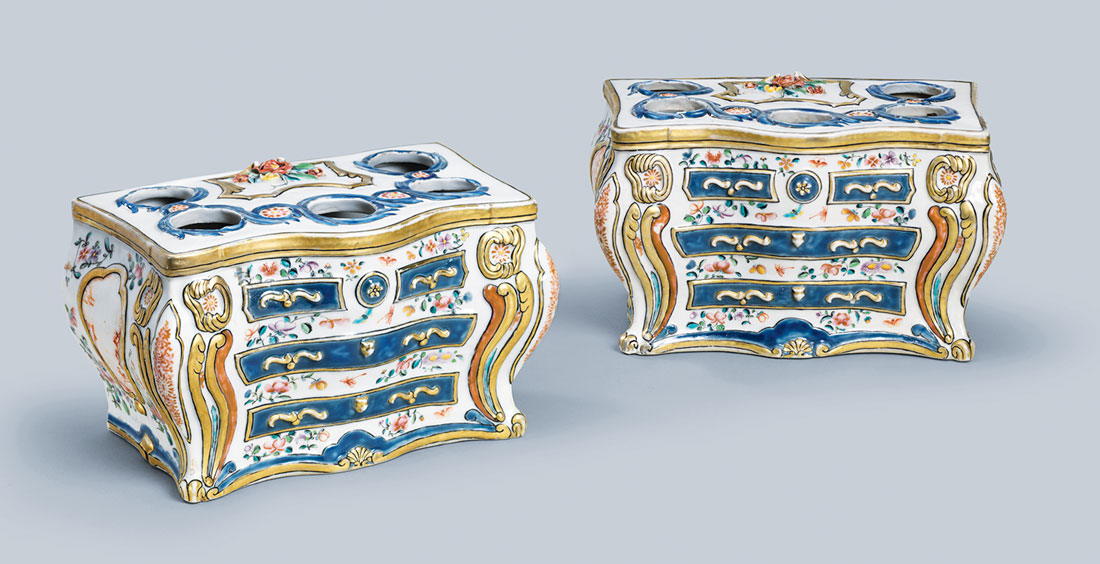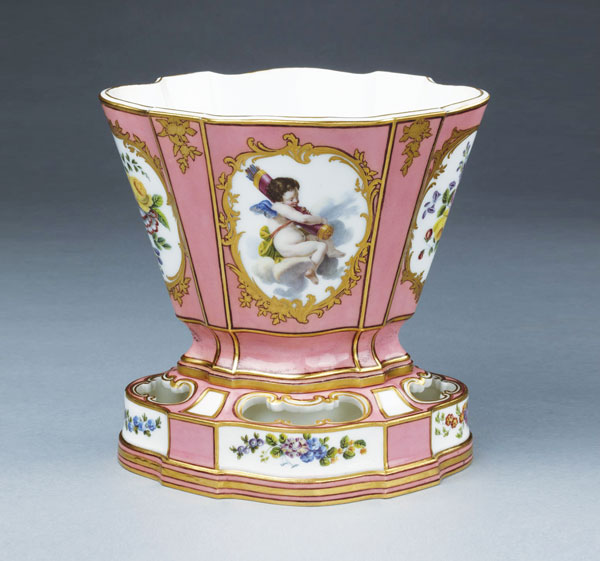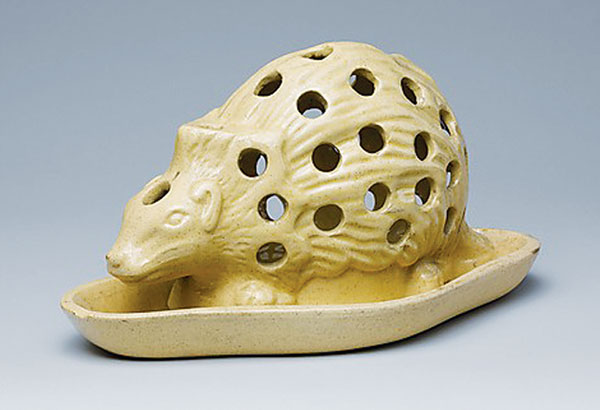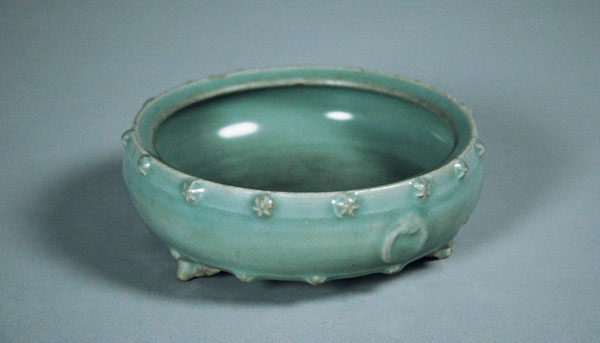Bring on Spring
Writer Leslie Gilbert ElmanA variety of antique vessels was made for blooming bulbs.
Antiques dealer Jorge Welsh recently offered for sale a group of charming porcelain objects. Made in China in the mid-18th century, they measure about 8½ inches wide and 5 inches high and resemble miniature chests of drawers (more properly called commodes) with bulbous curved bombé sides. They might have been mere decorative objects, but the five circular openings cut into their tops revealed their purpose as bulb pots.
Anyone who hankers for spring’s return probably has dabbled with forcing flower bulbs to grow indoors. It’s a simple process that artificially speeds up the natural winter-to-spring growth cycle of flowering bulbs such as narcissus and hyacinth, “tricking” them into blooming well before spring has truly sprung.
People have done this for centuries and, over the course of those centuries, they developed vessels specifically suited to the task.
Round, square or hexagonal bulb containers made in China as early as the 12th century were most often used to grow narcissus bulbs traditionally associated with lunar New Year celebrations. The containers would be filled with pebbles and water and the narcissus bulbs placed with their bottoms just touching the water’s surface. Kept indoors and warmed by the sun, the bulbs grew roots in the water and sprouted tall, stalky white flowers from the top, reacting as if spring temperatures had already arrived.
Flower bricks and similar vessels, such as the bombé bulb pots mentioned above, were intended for smaller bulbs such as crocus and hyacinth. They would be filled with water and the bulbs nestled into the holes in the top with their bases hovering above the water. As the roots sprouted and extended toward the water, the flower grew.
Forcing flower bulbs was especially popular in 18th-century Europe, and the porcelain and pottery centers of England, France, Germany and the Netherlands produced all manner of elegantly decorated pots and vases for the purpose. In the 1750s, the Sèvres royal porcelain factory in France introduced a two-piece form called “vase hollandois,” designed for growing narcissus bulbs indoors. (The “hollandois,” or “hollandais,” name likely comes from the fact that the Netherlands was —and still is—a primary source of flower bulbs.) What the European manufactories didn’t make themselves was made in China in the European fashion expressly for the European market.
The 19th century brought glass hyacinth vases designed to hold a single bulb as well as stoneware bulb pots made in whimsical shapes. The yellow hedgehog crocus pot now in the collection of the Metropolitan Museum of Art in New York City, for example, was made in New Jersey in the late 1860s, modeled on an earlier design by the English firm Wedgwood. Crocus bulbs would be positioned inside the body with their tops facing the holes. The body then was filled with moss or moistened soil. As the bulbs sprouted through the holes, they created the hedgehog’s coat of quills. (This design is sometimes called a porcupine, for obvious reasons.)
At the muddy tail end of winter, before outdoor gardens fully bloom, beautiful antique bulb pots are particularly appealing. In many cases, with proper care, even a centuries-old bulb pot can be put to use today. Preparing bulbs for forcing requires some forethought, but anything that brings on spring a little early is worth the effort.
Leslie Gilbert Elman is the author of Weird But True: 200 Astounding, Outrageous and Totally Off the Wall Facts. She writes about antiques and other subjects for Design NJ.




